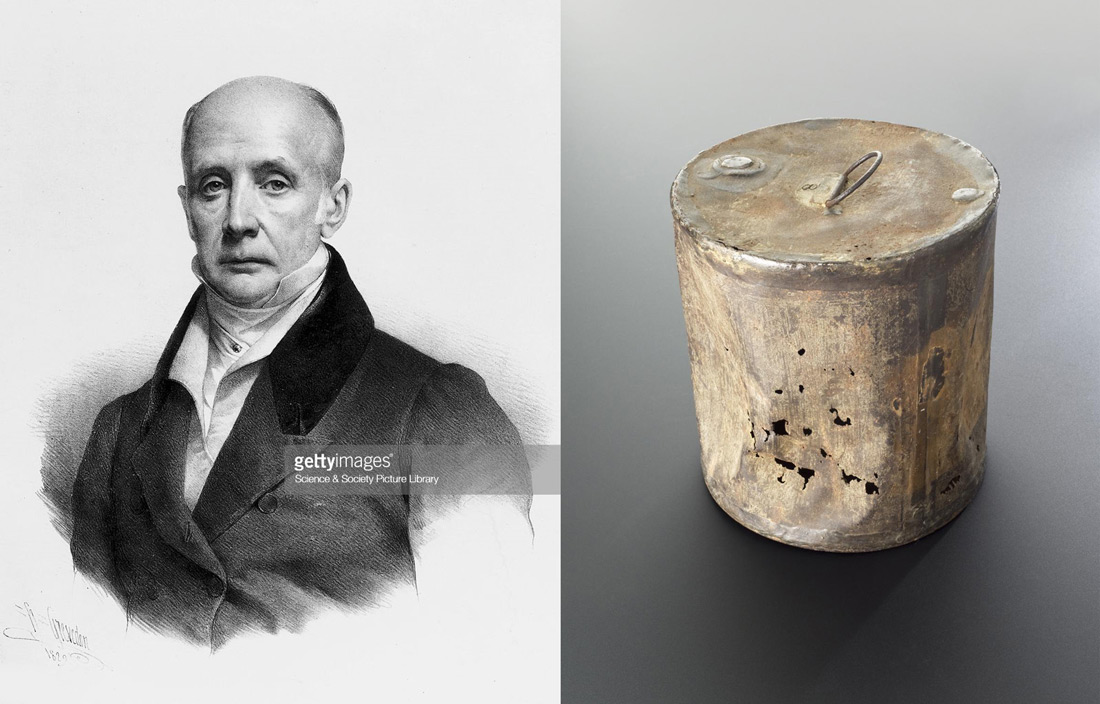24
JANUARY, 2018
Since the dawn of time man has looked for ways to preserve food, for hours, days, months and years.
Freezing, salting, smoking, boiling, pickling, curing, burying, drying, jellying, vacuum packing, but probably none has had a greater impact than canning.
French confectioner Nichola Appert came up with the initial idea in 1810, then fellow Frenchman Philippe Girard developed the concept further, but in 1812 it was London-based Bryan Donkin who bought a patent for a tin food container and took it to the world.
The inventor and businessman set about canning beef. If you think tinned stews these days are a little hard to stomach – imagine what these early early leaps into the culinary dark were like.

Left: lithograph by Grenedon of Donkin (1768-1855), printing and food-preserving pioneer.
Right: tin can used for the early preservation of food, Bryan Donkin and Co., London, England, 1812. (Science Museum, London)
Sources: Left – Getty, Right – sciencemuseum.org.uk
However, everyone from nobility to scurvy-riddled sailors took tinned food with gusto. It became a particularly vital addition to life at sea where food had been notoriously hard to preserve and sickness and disease impossible to eradicate (during this time way more people at sea died from disease than all the biggest naval battles combined).
Because of the impact it made on the seafaring world, the reputation of tinned food spread rapidly all around the world.
In Chile you can even find a cove called Caleta Donkin.
His name might be immortalised in Chile but elsewhere, including London, he is a relatively unknown and unheralded figure. Yet Bryan Donkin, from his Bermondsey factory, significantly impacted on pretty much everybody on the planet.
And if that wasn’t enough – he also invented the first paper making machine!
* A very early Donkin tin-can can be found at the London Science Museum.
